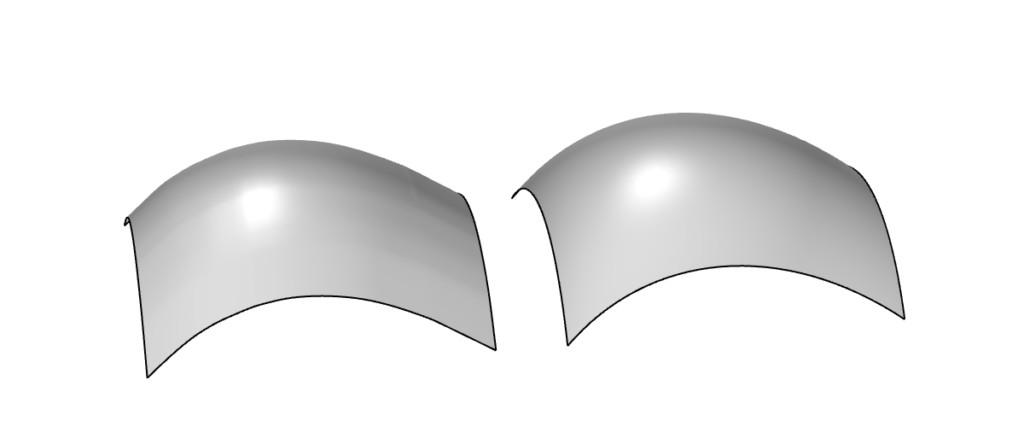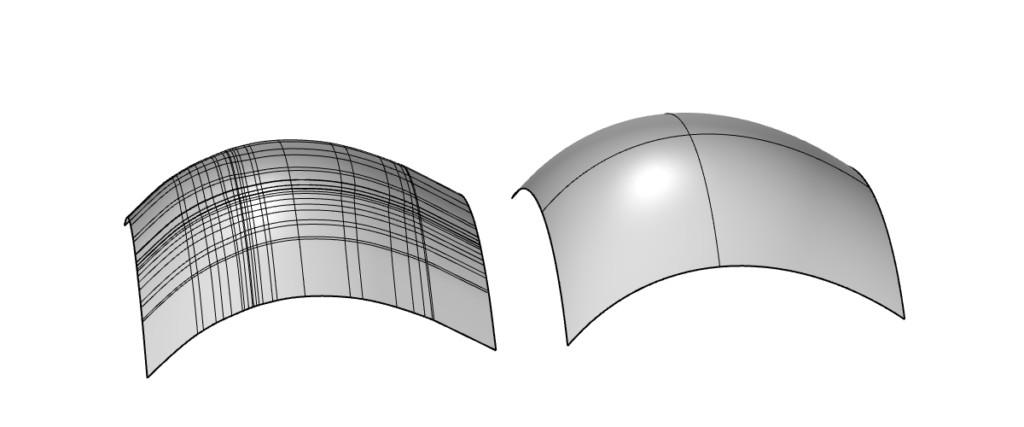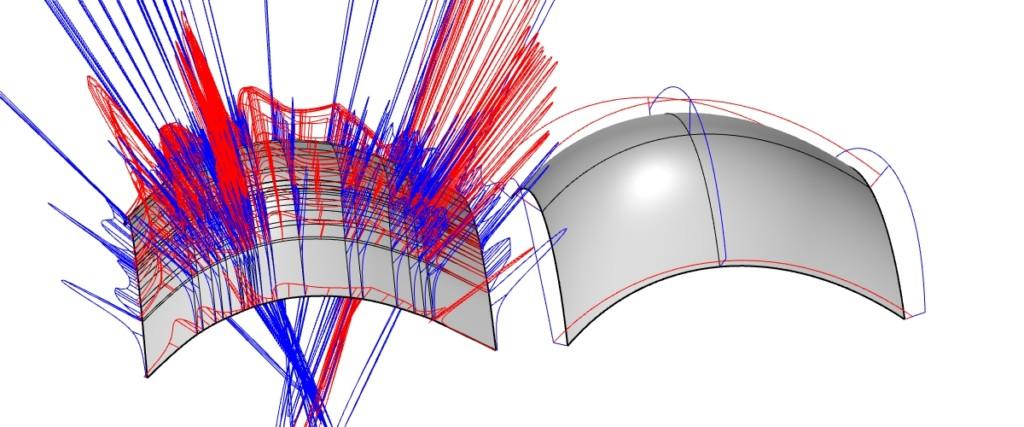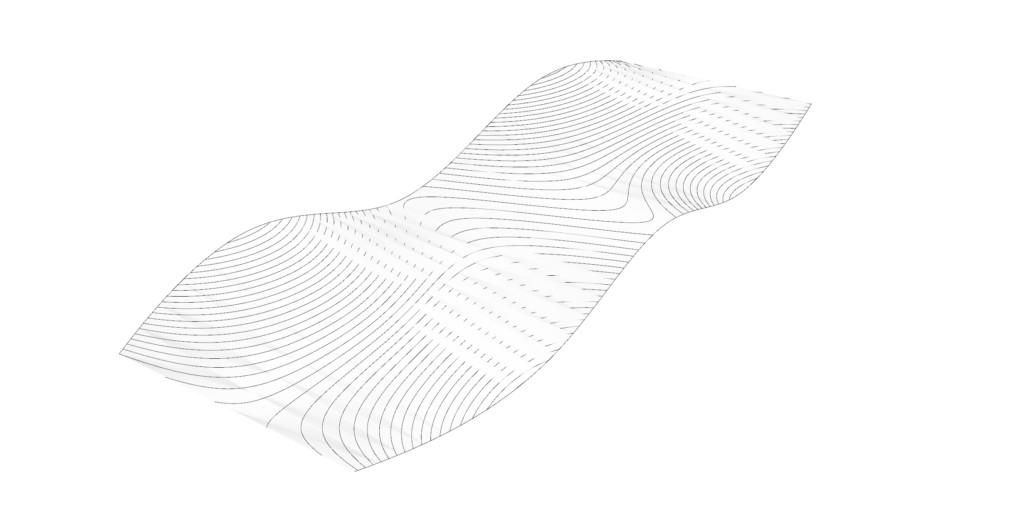|
Modeling Fundamentals: Surface
Goals
In surface modeling objects are created using infinitely thin surface patches. This means that objects (that are closed volumes) are hollow inside (unlike objects created with solid modelers). With surface tools, one can create complex high-quality geometry that is also manufacturable.
This chapter highlights the importance and characteristics of good-quality surfaces.
Good practices in surface modeling
Before starting modeling, we need to be aware of what we are actually building. 3D modeling is based on surfaces, when we are trying to create a solid, we are actually creating the surface of it.
There are some good practices in surface modeling, below you can find a few listed:
- Describe the form as simple as possible
- Surfaces should have a clean inner structure
- Connecting surfaces should be joined with no gaps (in tolerance)
- Connecting surfaces should have the appropriate continuity
Next, we take a closer look at surfaces.
Surface isocurve structure
Here you can see two at first glance similar-looking surfaces.
But the isocurve (lines on the surface) layout of the surfaces is very different: one is clean and simple the other is very uneven and dense.
Surfaces with a dense and irregular isocurve layout are prone to being uneven also geometrically. Here curvature graph tool is used to show the undulations of the surface.
Wavy surfaces cause wavy reflections.
Bad surfaces are bad for further modeling. An offset surface (giving thickness to the geometry for example) will multiply the original issues.
Offset issues can be critical causing invalid geometry (highlighted here with red lines).
Contour
Contour line joins points of equal height above a given level. A contour map is a map illustrated with contour lines, it is often used to show valleys, hills, and slopes of terrain. ( See also a topographic map). It could be generated from any surface by given a specific value to height difference and base plane.
A contour map could be used to generate an irregular surface, which is super handy for building terrain. Contour information for many places is available online.
The picture below shows a surface with contour lines. The height difference value of contour on the top is 0.5 m; the height difference value of contour on the bottom is 1 m.









